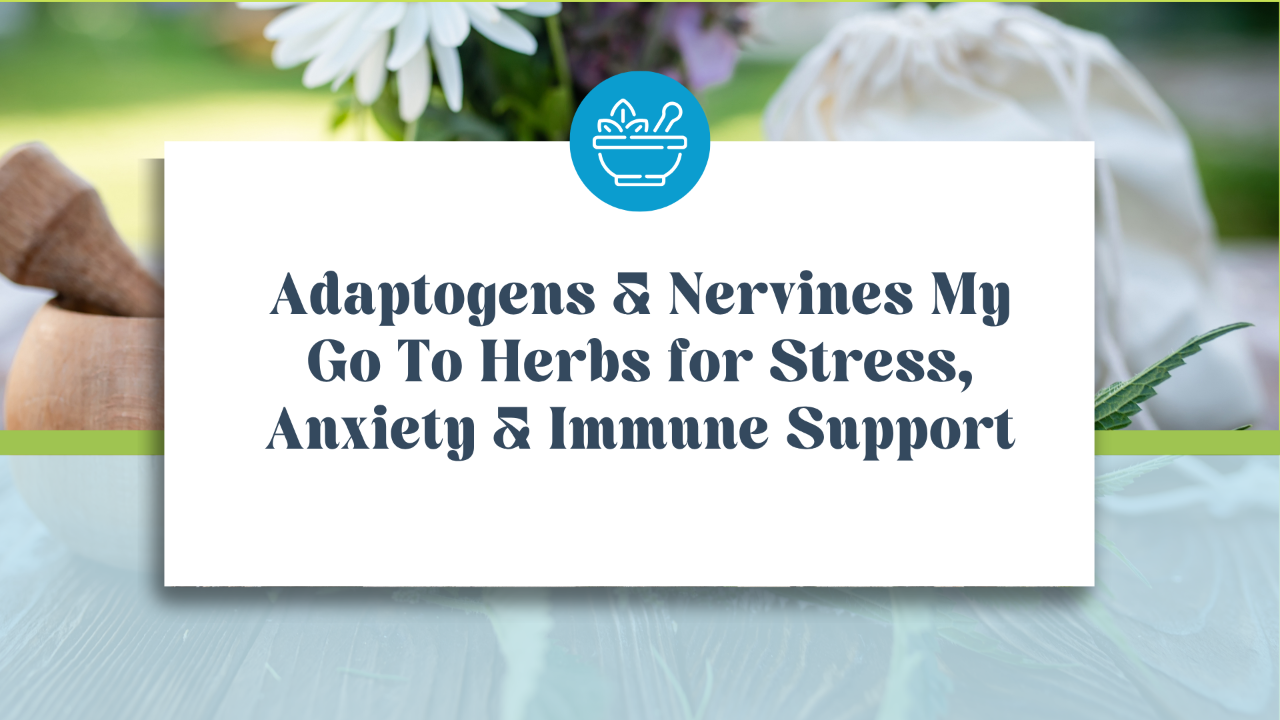Community Herbalism In Action: Accessible Ways to Share Plant Medicine & Support Your Neighbors

When healthcare costs skyrocket, food insecurity rises, and communities face growing challenges, it’s easy to feel helpless. But as herbalists, we have something powerful to offer—not just remedies, but connection, knowledge, and care.
In this episode, I’m getting real about what’s happening in our world right now and how we can show up for our communities through herbalism. Whether you’re a clinical herbalist or someone who simply loves making calendula salve, there are meaningful ways to contribute without burning out or giving everything away.
The Power of Community Care
All around us, people are facing challenges. Healthcare costs that feel impossible. Food insecurity that’s hitting too close to home. But when you look closely, you’ll also see something beautiful: people coming together.
Mutual aid groups. Food drives. Restaurants and small farms giving back.
That’s the spirit of community herbalism—helping where you can, with what you have. Whether that means brewing a pot of calming tea for a stressed neighbor or offering a free class on local medicinal plants, every small act of care makes a difference.
We Are the Lineage of Healers
Herbalists have always risen in times of need. We stand in a long line of healers and medicine keepers—many of them women, many of them people of color—who were called wise women, root doctors, curanderas, folk healers… and yes, sometimes witches.
Not because they were mysterious, but because they were powerful. Because they carried knowledge that couldn’t be owned, patented, or controlled. Because they dared to care outside the boundaries of what was sanctioned or profitable.
Their work wasn’t about status or titles. It was about service—about meeting people where they were and remembering that true healing has always come from connection.
And that’s what this work still is: a quiet rebellion against disconnection. A return to relationship, reciprocity, and shared responsibility for one another’s well-being.
You are part of that lineage. You carry the same spark those healers did—the one that says we can take care of each other. The one that knows the land holds medicine, that our hands can heal, and that community is the foundation of true health.
When you share a pot of tea, teach a neighbor how to soothe a cough, or show up for your community with herbs in your bag and kindness in your heart, you continue this legacy of care.
This is the work of herbalists for the people. It’s ancient. It’s modern. It’s needed—right now.
So How Do We Actually Show Up?
Here are some accessible, real-world ways to share herbal medicine and strengthen the web of care in your community.
Teach and Empower
Host free or donation-based workshops on topics like fire cider, elderberry syrup, or herbal gift-making. Lead herb walks in local parks or schoolyards to help people connect with the plants growing right around them. Partner with libraries, community centers, or after-school programs to reach people who are hungry for this knowledge.
Offer Sliding-Scale Care
Consider dedicating one day a month to community care—sliding scale or donation-based consultations where you work with as many people as you can. Make it known through mutual aid groups, community centers, and local networks that you’re available to help.
Show Up with Herbal First Aid
Bring calming teas, nervines, and herbal support to community events, protests, or gatherings where people are stressed and emotions run high. Set up a tea table at your farmer’s market or in a local park and invite neighbors to sit, sip, and connect.
Create Care Kits
Put together simple herbal care kits and distribute them to neighbors in crisis, unhoused community members, or through local mutual aid efforts. If you’re a product maker with extra inventory, donate to organizations that serve your community.
Build Community Medicine Gardens
Start planning now for spring. Organize a community medicine garden where people can grow and harvest plants like Plantain, Lemon Balm, and Calendula—easy, abundant herbs that nourish both body and spirit. These gardens become educational spaces and food security resources since so many medicinal herbs are also food.
Share Sustainable Harvesting Skills
Teach proper plant identification, ethical wildcrafting, and the importance of reciprocity. Harvest with gratitude, take no more than a tenth of a stand, and always keep the future in mind.
Start Seed Libraries and Medicine Swaps
Create neighborhood herb swaps or medicine libraries where people can share remedies they’ve made. Organize seed-saving circles so everyone has access to medicinal plants for their own gardens.
Balancing Generosity with Boundaries
Through all of this, remember that your time, energy, and skills are valuable. The plants may be medicine of the people, but you also have bills to pay and a life to sustain.
Find balance by offering what you can. Maybe it’s one day a quarter for donation-based work, or simply sharing a cup of tea with a neighbor.
You don’t have to do everything on this list. You can start small. Share a salve, teach someone about one plant, brew a pot of calming tea for your community.
This is how herbalism spreads—like wildflowers.
Feeling Called to Serve on a Deeper Level?
If you’re feeling called to expand your herbal knowledge and serve your community with greater confidence, I invite you to check out the Community Herbalist Certification Program.
Inside, you’ll learn to help people heal from the inside out—going beyond the calendula salve for a rash to addressing root causes and creating lasting wellness.
Learn more here: Community Herbalist Certification Program
Do You Have The Right Remedies On Hand?
Whether it’s a tummy ache, sleepless nights, or boosting immunity, The Ultimate Guide to Stocking Your Natural Medicine Cabinet has the top-quality remedies you need. Tested by a clinical herbalist—and her kid too!
Grab your guide below👇🏼
We hate SPAM. We will never sell your information, for any reason.






